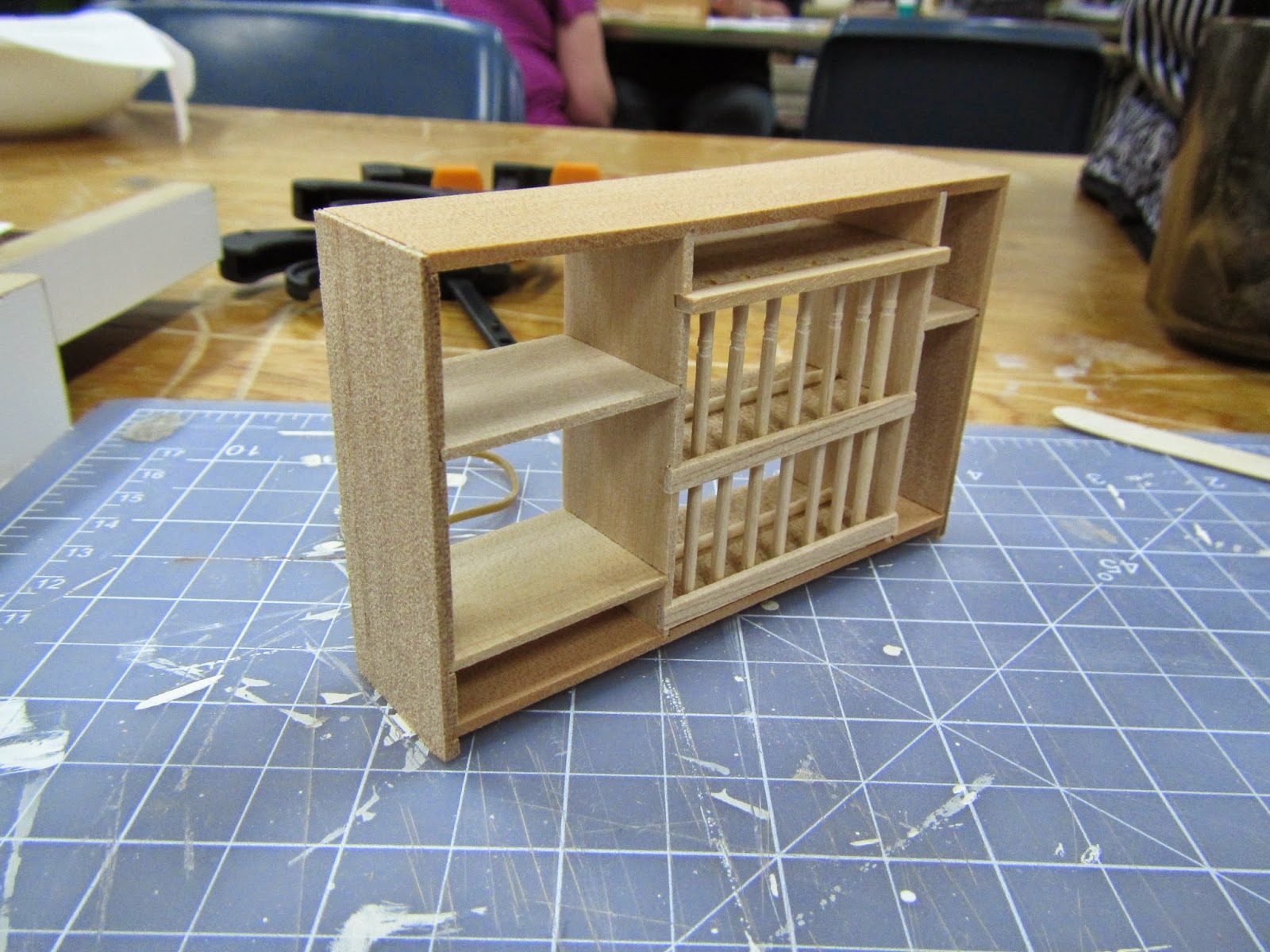For our club display at the minis convention in Nelson, we have made displays in food tins of various kinds. I wasnt feeling inspired by biscuit tins and chocolate tins and cracker tins etc. Then I came across a 3 liter Asahi beer can, when having dinner in a local Japanese restaurant. Bingo! Here is the can:
I had a round wooden presentation box for wine bottles, with a flexible sheet of wood, and I cut the bottom and top off, leaving a useful sheet of wood. I cut a couple of panels out of that:
These will be painted and glued to the inside of the tin, either side of the doorway.
I cut the rim off a tin lid, a very pretty tin, but just taking up space in my pantry. Actually, hubbie cut it off, using my Dremel.
I found cork stickers in the scrapbooking shop, and used them to tile the inside of the tin lid:
The tin will need a strip of something for the skirting board, to go inside the lip of the tin.
In Daiso, the Japanese $2 shop (actually $3.50...) I found fridge magnets. The wine bottles arent 1/12th scale, as wine bottles, but as sake bottles, they are just the right size! Here are the fridge magnets:
I pulled the bottles and the fruit and veggies out of the wooden crates, and gouged the magnets off the back. I am left with a dozen very useful wooden crates, of a good size for some other scene, some extremely weird vegetables, mostly un-usable, 24 perfect sake bottles, and a couple of bleeding wounds on my left hand, where the broken screwdriver slipped:
I have found some sake bottle labels on the i-net, and will stick them onto the bottles for my bar. There are several different colours of bottles, pale yellow, some rose looking ones, and some dark ones. That's fine, as sake comes in all different colours, as I found when doing some research in a Japanese restaurant. Honestly. Research.
The next thing is sake barrels. I found a place (long live Google) where I could buy new sake barrels, if I wanted to make my own sake. I could do that, I made my own wines before now. They even won prizes, at the agricultural show! In Zambia. Anyway, that was a good place to see how a sake barrel really looks, and I can use some napkin rings, that I found in the Op Shop, that are just about the right size. Good thing too, they are ugly as sin, and I didnt know what else to do with them:
So I have also printed out some images of sake barrel labels, and will then add the soft white rope which traditionally ties up the barrels.













